

20 13 28 33 Extraordinary Times Call For Extraordinary Measures - Gary T. Clarke and Cheryl Rea, Stikeman Elliot Are Employment NonCompete Agreements Enforceable? - Gary Trachten, Kudman Trachten Aloe Posner LLP. Complying With The New SEC Pay Vs. Performance Disclosure Rules - Tanya Jansen, Beqom 401(k) Audits: What You Need To Know - Grace Ferguson, Zanefits U.S. LABOR IMMIGRATION: TOP DEVELOPMENTS - Miguel Manna, Attorney, Parker Poe JANUARY 2023 • Vol.10 • No.01 (ISSN 2564-2022)
Key


On the Cover INDEX HR Legal & Compliance Excellence
2023 Vol.10 No.01 (ISSN 2564-2022)
Labor
JANUARY
U.S.
Immigration: Top Developments
steps taken by the government
impact
in 2022 and the likely
in 2023
07 Articles 11 New York Employers Must Provide Digital Workplace Posters Electronic furnishing of postings is an additional requirement for employers to satisfy
Nicole Price, Associate and Glenn Grindlinger, Partner, Fox Rothchild LLP. 16 NLRB Adds Consequential Damages As A Remedy For Unfair Labor Practices What does this mean for employers? - Todd J. Horn, Partner, and Imani T. Menard, Associate, Venable LLP. 24 How 12 Organizations Are Changing Their Employee Leave Policy In 2023 A leave policy that caters to your employees’ needs - Brett Farmiloe, Founder and CEO, Terkel.io 31 Earned Wage Access: Aiding Unbanked And Underbanked Employees Most Americans have little money left over at the end of the month - Robert Moore, Director, Training, Time Equipment Company 38 What Can Be Done to Reprice Underwater Stock Options? Companies can consider multiple ways to reinvigorate these unique incentive options - Stephen Rickles, Partner, Spencer Fane LLP
- Miguel Manna, Attorney, Parker Poe
-
Extraordinary Times Call For Extraordinary Measures
Unpaid leave for non-compliance with mandatory vaccination policy is not constructive dismissal - Gary T. Clarke, Partner and Co-Head, and Cheryl Rea, Senior Counsel, Stikeman Elliot

Are Employment Non-Compete Agreements Enforceable?
How to prepare a reasonable post-employment non-compete agreement - Gary Trachten, Founding Partner, Kudman Trachten Aloe Posner LLP.
Complying With The New SEC Pay Vs. Performance Disclosure Rules
What will it take to cope with the new rules in the most efficient way? - Tanya Jansen, Co-Founder, Total Compensation and Continuous Performance Management Solution, Beqom


13 20 28 33
401(k) Audits: What You Need To Know
What they are, who must conduct them (and when), what they involve, and how to prepare for one - Grace Ferguson, Business Writer and Blogger, Zanefits

TOP PICKS
INDEX
How are our Legal & Compliance Products and Services helping to make you smarter?
Legal & Compliance Excellence - Monthly Interactive Learning Journal

This monthly interactive learning experience showcases solutions to deal with the latest legal and compliance issues facing corporations and legal departments.
Legal and Compliance Webcasts for Credit
HR.com offers various informative webcasts on a variety of topics including the latest HR compliance updates and legal considerations for employers and all HR professionals. Webcasts are available live online with a downloadable podcast and a copy of the slides (PDF) available before and after each webcast. Earn all of the required recertification credits for aPHR, PHR, SPHR, GPHR, and SHRM Certifications. HR.com’s one-hour webcasts, in every HR specialty including Legal and Compliance, are pre-approved for HRCI and SHRM credit (excluding Demo webcasts).
Legal and Compliance Community
Join almost more than 30,000 HR.com members with a similar interest and focus on compliance on legal regulations in HR. Share content and download research reports, blogs, and articles, network, and “follow” peers and have them “follow” you in a social network platform to communicate regularly and stay on top of the latest updates. This well established Legal and Compliance Community is an invaluable resource for any HR professional or manager.

SEP 2017 Vol. No. 09 Use these invaluable Legal & Compliance resources today! For more information phone: 1.877.472.6648 |
sales@hr.com |
email:
www.hr.com
Editorial Purpose
Excellence Publications
Mcgrath Publisher, HR.com

Submissions & Correspondence
Employers across the United States spent much of 2022 grappling with the bustling labor market and competing for U.S. workers as demand outpaced supply.
Many employers also looked overseas to recruit candidates to fill open positions, but their efforts have been stymied by an immigration system still recovering from the Covid-19 pandemic. Application backlogs and lengthy visa processing delays have made it difficult for companies to actually hire otherwise qualified candidates.
The good news is that the U.S. government has implemented various measures focused on cutting processing times and minimizing workforce disruptions. The bad news is that some of these measures are temporary, and others are to be phased in over several years, meaning relief may not be immediate.
Check out Parker Poe Attorney Miguel Manna's U.S. Labor Immigration: Top Developments, where he gives a run down on the key steps taken by the government and the likely impact in 2023.
In Extraordinary Times Call For Extraordinary Measures, attorneys from Stikeman Elliot Gary T. Clarke and Cheryl Rea, go into the details of Parmar vs. Tribe Management Inc., 2022 BCSC 1675 case, where the British Columbia Supreme Court riled its first judicial decision considering whether placing a non-union employee on unpaid leave of absence for failing to comply with a mandatory vaccination policy constitutes a constructive dismissal.
Moving on, Gary Trachten from Kudman Trachten Aloe Posner LLP. discusses whether (Are) Employment Non-Compete Agreements Enforceable?
This is not all! This issue of HR Legal & Compliance Excellence also focuses on other legal aspects and highlights that should help you keep your workforce healthy, safe and secured.
Happy Reading!
Write to the Editor at ePubEditors@hr.com
HR

Disclaimer: The views, information, or opinions expressed in the Excellence ePublications are solely those of the authors and do not necessarily represent those of HR.com and its employees. Under no circumstances shall HR.com or its partners or affiliates be responsible or liable for any indirect or incidental damages arising out of these opinions and content.
NOTE What
Subscribe now for $99 / year And get this magazine delivered to your inbox every month Become a Member Today to get it FREE! SIGN UP OR For Advertising Opportunities, email: sales@hr.com Copyright © 2023 HR.com. No part of this publication may be reproduced or transmitted in any form without written permission from the publisher. Quotations must be credited.
EDITOR’S
Awaits Employers in 2023?
Our mission is to promote personal and professional development based on constructive values, sound ethics, and timeless principles.
Debbie McGrath CEO, HR.com - Publisher Dawn Jeffers VP, Sales Sue Kelley Director (Product, Marketing, and Research) Babitha Balakrishnan and Deepa Damodaran Excellence Publications Managers and Editors HR Legal & Compliance Excellence Team Deepa Damodaran, Editor Arun Kumar R Design and Layout (Digital Magazine) Chandra Shekar A K Magazine (Online Version)
Please send any correspondence, articles, letters to the editor, and requests to reprint, republish, or excerpt articles to ePubEditors@hr.com For customer service, or information on products and services, call 1-877-472-6648
Legal & Compliance Excellence (ISSN 2564-2022) is published monthly by HR.com Limited, 56 Malone Road, Jacksons Point, Ontario L0E 1L0 Internet Address: www.hr.com
Deepa Damodaran Editor, HR Legal & Compliance Excellence
Debbie
In a world of unparalleled challenges (global pandemic, racial injustice, political rivalry, digital 4.0, emotional malaise), uncertainty reigns. Finding opportunity in this context requires harnessing uncertainty and harnessing starts with reliable, valid, timely, and useful information. The Excellence publications are a superb source of such information. The authors provide insights with impact that will guide thought and action.
Dave Ulrich
Rensis Likert Professor, Ross School of Business, University of Michigan
 Partner, The RBL Group
Partner, The RBL Group
Excellence publications are my ‘go-to’ resource for contemporary and actionable information to improve leadership, engagement, results, and retention. Each edition offers rich and diverse perspectives for improving the employee experience and the workplace in general.


Julie Winkle Giulioni
Author, Virtual /Live Keynote Presenter, Inc.’s Top 100 Leadership Speakers
I regularly read and contribute to Leadership Excellence and Talent Management Excellence. I use many of the articles I read to augment my own presentations and I often share the articles with my clients. They are always quick, right on target for the latest issues in my field, and appreciated by my clients.



If you want to stay up to date on the latest HR trends, choose a few of the different issues from the Excellence series of publications.
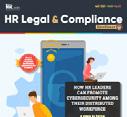






 Dr. Beverly Kaye CEO, BevKaye&Co.
Dr. Beverly Kaye CEO, BevKaye&Co.


We’re eager to hear your feedback on our magazines. Let us know your thoughts at ePubEditors@hr.com WHY EXCELLENCE PUBLICATIONS?
U.S. Labor Immigration: Top Developments
Key steps taken by the government in 2022 and the likely impact in 2023
By Miguel Manna, Parker Poe
Employers across the United States spent much of 2022 grappling with the bustling labor market and competing for U.S. workers as demand outpaced supply. Many employers also looked overseas to recruit candidates to fill open positions, but their efforts have been stymied by an immigration system still recovering from the Covid-19 pandemic. Application backlogs and lengthy visa processing delays have made it difficult for companies to actually hire otherwise qualified candidates.
The good news is that the U.S. government has implemented various measures focused on cutting processing times and minimizing workforce disruptions. The bad news is that some of these measures are temporary, and others are to be phased in over several years, meaning relief may not be immediate.
Below is a summary of the key steps taken by the government and the likely impact heading into 2023.
Disruptive Visa Delays Cause Open Positions to Remain Unfilled
As of June 2022, U.S. Citizenship and Immigration Services (USCIS), the agency responsible for processing immigration benefits, reported a backlog of more than 8.5 million pending immigration cases. While backlogs have been a regular complaint in the immigration system over the years, the current number of pending cases is particularly high.
A combination of factors over the last several years, including policy changes implemented by the previous administration and the Covid-19 pandemic, created a veritable pile-up of visa applications at USCIS and U.S. embassies and consulates around the world.
For employers, this backlog has created significant delays in the issuance of employment-based immigration benefits, such as employment authorization documents, visas and green cards. This is problematic because foreign national employees cannot work in the United States without work authorization and these processing delays often mean that employers must wait many months before they can actually onboard their new hires and fill the position.
In fact, the current average processing time for a work authorization document for an employment-based visa applicant ranges between eight to more than 15 months.
Processing delay complications are not limited to new hires, however. Foreign national employees must renew their visas at certain intervals, and while renewal applications are usually fairly straightforward in the absence of significant changes in circumstances, these applications get added to the visa queue with all of the others.
HR Legal & Compliance Excellence presented by HR.com JANUARY 2023 7 Submit Your Articles
COVER ARTICLE
If the foreign national employee does not receive an extension of their status or employment authorization document (EAD) before their existing work authorization expires, the employee must stop working. A lapse in work authorization can severely delay or scuttle critical projects and add complications and additional expenses to HR if recruiting a temporary replacement is necessary.
Many employers rely on premium processing to expedite the processing of certain visa benefits by USCIS. Premium processing is a service offered by USCIS, for an additional fee, that guarantees that USCIS will take some form of adjudicative action within a specified time period (based on the type of immigration benefit requested).
However, while premium processing is a helpful option, it does not apply to all employment-based immigration benefits. It is also expensive. As of the time of this article, the cost for premium processing applications is currently $2,500, which is paid in addition to all the other filing fees associated with the underlying visa application. This can be prohibitive for employers.
Government Intervention to Reduce Backlogs
USCIS acknowledged the extensive backlogs, and in early 2022 announced an agency-wide initiative to wrangle processing times and improve the speed with which foreign nationals receive decisions on their cases.
Below is a summary of the key components of the agency’s plan, including a discussion of the steps that have already been taken and those still in the works.
Improved cycle times
One of USCIS’ key goals is to reduce internal “cycle times” for each form type. Cycle times equate to the number of months’ worth of cases pending with USCIS for each form type. They are used by USCIS to measure its progress in reducing backlogs and processing times. The agency believes that improved cycle times will result in faster processing times. While cycle times differ from processing times
(processing times measure the average time it takes to decide a particular case type from start to finish), the two metrics are generally comparable.
The new target cycle times issued by USCIS are aggressive. For example, the target cycle time for EADs is 90 days, and only two weeks for most temporary work visa petitions. By way of comparison, most EADs and work visa petitions currently take more than nine months to adjudicate. USCIS plans to hire approximately 4,000 new employees, enhance its technology and streamline some of its internal adjudication practices, but it is not clear whether the agency will be able to hit the new targets by the end of the 2023 fiscal year as they hope to. Processing times have improved incrementally in the short time since USCIS announced the plan.
Expansion of premium processing
As noted earlier, premium processing has long been a tool used by employers to help mitigate the impact of processing delays. Traditionally, only certain case types were eligible for premium processing. As part of their initiative to cut processing times, USCIS has commenced a phased approach to expanding the list of eligible case types to include work authorization documents, extensions of stay/change of status applications, and various additional green card petitions.
HR Legal & Compliance Excellence presented by HR.com JANUARY 2023 8 Submit Your Articles
U.S. Labor Immigration: Top Developments
This is a critical step as the expansion covers a wider range of popular and frequently used benefits that were otherwise not eligible for any type of expedited processing.
USCIS has taken steps to codify the premium processing expansion into a formal regulation, which means the additional case types would become eligible for premium processing on a permanent basis. However, it is important to note that the expansion is scheduled to go into effect over the next several years. To date, USCIS has completed three phases of the planned expansion to extend premium processing eligibility to certain categories of green card petitions but extensions of stay/changes of status for temporary visas and EADs are not yet eligible. USCIS has not provided a specific timeline for the expansion.
Two more practical notes about premium processing to consider:
● Employees may pay the premium processing fee themselves; it does not have to be paid by the employer. This may be a good time for employers to create a policy to determine when they will pay

for premium processing upgrades and when the employee will be responsible.
● Employers should be aware that USCIS has the authority to suspend premium processing when it deems necessary (typically in the event of filing surges). This seems unlikely in the current climate given that USCIS is expanding premium processing to help address the visa application backlog.
Automatic work authorization extensions
USCIS has also temporarily increased the automatic extension period for certain EAD renewal applications from the standard 180 days to 540 days. That means that certain foreign nationals who have filed an EAD extension with USCIS may continue to work for an additional 540 days from the expiration date of their employment authorization.
This is significant because, as discussed earlier, current processing times for EADs range anywhere from approximately 240 to 465 days, which is well outside the standard 180-day automatic extension period. In most cases, the 540-day extension is sufficient to prevent lapses in work authorization for foreign national employees.
HR Legal & Compliance Excellence presented by HR.com JANUARY 2023 9 Submit Your Articles
U.S. Labor Immigration: Top Developments
The 540-day extension is automatic and does not require payment of an additional government fee. It is important to note, however, that the automatic extension period is set to revert back to the standard 180 days for renewal applications filed after October 26, 2023.
Additional Efforts by U.S. Agencies
The U.S. Department of State (the State Department) is also taking steps to address the processing delays and backlogs affecting U.S. embassies and consulates around the world. This is significant because U.S. embassies and consulates are responsible for issuing the actual visa stamps that most foreign national employees require in order to enter the United States or to return from overseas travel. To obtain or renew a visa, most foreign nationals are required to attend an in-person interview at the embassy or consulate before the visa is issued.
Unfortunately, complications caused by the Covid-19 pandemic, including closures and travel restrictions, made visa interviews nearly impossible and thus severely limited the number of visas that could be processed. Exceptions were made only for serious emergencies or for employees that could demonstrate that their role was vital to U.S. infrastructure or pandemic recovery efforts. To complicate matters, the reduction in application fees and revenue caused by the closures contributed to a hiring freeze that left more than 300 overseas positions open in 2020 and 2021, and further limited visa processing.
In an effort to clear out the backlog, the State Department is now prioritizing the issuance of employment-based visas. Additionally, the agency has also temporarily waived its in-person interview requirement for a number of popular visa categories, including certain foreign nationals applying to renew their nonimmigrant (temporary) visas in the same visa classification. According to State Department estimates, approximately 30 percent of nonimmigrant visa applicants may be eligible for the interview waiver. This is a huge timesaver in the visa adjudication process for the visa applicant since wait times for visa appointments can be very long.
The State Department’s interview waiver is set to expire on December 31, 2022. If the interview waiver is not extended, those applicants who do not get their visa applications approved prior to December 31st will be required to attend in-person visa interviews.
Looking Forward
It seems a positive sign that USCIS and the State Department are taking steps to improve processing timelines and streamline the immigration process. Their efforts have only been in place a short time and there have already been incremental improvements.
In the meantime, employers may want to consider taking the following steps to help manage their foreign national populations and mitigate additional processing delays:
● Track visa and EAD expiration dates and set calendared reminders to file timely extensions. In many cases, extensions can be filed 180 days months prior to expiration. Given the processing delays, it is especially important to file as early as allowed for the specific visa benefit sought.
● If your company has a work-from-home or workfrom-anywhere policy, you may want to keep an updated record of where each employee is physically located. This is important because many immigration benefits require the disclosure of a work cite. For one of the most popular immigration categories, the H-1B, the geographic location determines several compliance factors including prevailing wages.
Miguel Manna is an Attorney in the Raleigh office of law firm Parker Poe. He provides strategic immigration solutions to clients of all sizes and across a wide variety of industries, including health care, higher education, technology, and banking and finance. Would you like to comment?

HR Legal & Compliance Excellence presented by HR.com JANUARY 2023 10 Submit Your Articles
U.S. Labor Immigration: Top Developments
New York Employers Must Provide Digital Workplace Posters
Electronic furnishing of postings is an additional requirement for employers to satisfy
By Nicole Price and Glenn Grindlinger, Fox Rothchild LLP.
In addition to the increasing number of posters employers are required to physically display, effective December 16, 2022, New York employers must now furnish all employees with digital copies of all required posters via
email or by posting them on the employer’s website.
Section 201 of New York’s Labor Law requires employers to furnish employees with “copies or abstracts” of laws,
rules, and orders, that are designated by the New York State Department of Labor (NYDOL) as affecting employees.
Traditionally, this obligation was satisfied by an employer posting the copies and abstracts “in a conspicuous place on each floor of the premises.” Indeed, the NYDOL’s guidance has previously indicated that furnishing required notices electronically only may not be sufficient for employers to satisfy their obligations under Section 201. The physical requirement piece of Section 201 has now been confirmed with the latest amendment.
On December 16, 2022, Governor Kathy Hochul signed into law an amendment to Section 201 that expanded the posting requirements. Employers must now:
HR Legal & Compliance Excellence presented by HR.com JANUARY 2023 11 Submit Your Articles
1. Furnish digital versions of all copies and abstracts required under New York law or the NYDOL’s regulations to all employees through either the employer’s website or by email;
2. Furnish digital versions of all other documents required to be physically posted in the workplace pursuant to any state or federal law or regulation to all employees through either the employer’s website or by email; and
3. Provide notice to employees that all physically posted notices are available electronically.
The amendment language indicates that these new requirements do not substitute an employer’s obligations under New York or federal law to physically display postings in a conspicuous place in the workplace. Instead, the electronic furnishing of postings is an additional requirement for employers to satisfy.
Failure to comply with these new requirements can result in monetary fines. Additionally, non-compliance may be used as evidence to support other alleged workplace violations by an employer.
Next Steps
Employers should act promptly to comply with the amended Section 201, which took effect immediately on December 16, 2022.

First, all employers should ensure that they have all required posters physically displayed on their premises in a conspicuous place. Next, employers should obtain digital copies of all such postings.
For employers with a website or company-provided email addresses for all employees, compliance with the amended Section 201 is relatively straight-forward. Such employers should take appropriate steps to provide digital postings to their employees through their electronic systems. While the law does not specify what websites qualify, an employer’s use of a private intranet site that all employees can access may be sufficient.
For employers without a website (or intranet site) or email system, the steps required for compliance are unclear and more challenging. The law does not specify how these employers should provide notice to employees or whether these employers are required to create a website or company-authorized email accounts to comply. Until further guidance is available, employers in this situation should collect a personal email address from each employee and share the digital postings by email. Employers should be sure to maintain records of their provision of digital postings to each employee.
Finally, all employers should furnish employees with written notice that the postings are available electronically. This
could be provided in a variety of ways, such as including the notice in the employee handbook or including the notice with the other physically displayed posters.
Glenn S. Grindlinger is a Partner at Fox Rothschild LLP. Glenn is the regional practice lead for the firm’s Labor & Employment Department in New York City. He represents management in the full spectrum of labor and employment law matters. Would you like to comment?

HR Legal & Compliance Excellence presented by HR.com JANUARY 2023 12 Submit Your Articles
This article first appeared here York Employers Must Provide Digital Workplace Posters
New
Nicole E. Price is an Associate at Fox Rothchild LLP. Nicole counsels clients on a variety of labor and employment matters, including workplace policies, regulatory compliance and litigation.
Extraordinary Times Call For Extraordinary Measures
Unpaid leave for non-compliance with mandatory vaccination policy is not constructive dismissal
 By Gary T. Clarke and Cheryl Rea, Stikeman Elliot
By Gary T. Clarke and Cheryl Rea, Stikeman Elliot
Withthe decision of the British Columbia Supreme Court in Parmar v Tribe Management Inc., 2022 BCSC 1675 (“Parmar”), Canada has its first judicial decision considering whether placing a non-union employee on unpaid leave of absence for failing to comply with a mandatory vaccination policy constitutes a constructive dismissal.
The Background
The plaintiff, Deepk Parmar, was employed by Gateway Property Management as its Controller –Client Accounting when it was acquired by Tribe Management Inc. (“Tribe”) in the summer of 2021 during the Covid-19 pandemic.
Around the time of the acquisition, Tribe was exploring the possibility of a mandatory vaccination policy (“MVP”) for its employees even though approximately 90% of its
employees could work remotely. While Ms. Parmar had been able to work remotely some of the time, she had never been entirely remote. Initially, it asked its employees to disclose their vaccination status, found that 84% were vaccinated, and concluded that the number of unvaccinated was unacceptably high given the risks of Covid-19 as presented or directed by the public health
authorities and governments at that time.
While Tribe could have implemented an MVP that only applied to its property management employees, this was seen as unworkable due to the integration of those employees with the administrative employees.
HR Legal & Compliance Excellence presented by HR.com JANUARY 2023 13 Submit Your Articles
Top Pick
Ultimately, on October 5, 2021, Tribe introduced its MVP (which contemplated exemptions for religious and medical grounds), requiring all its employees to be fully vaccinated by November 24, 2021, and all but Ms. Parmar and one other employee complied.
Ms. Parmar’s refusal to get vaccinated was not due to religious or medical grounds but rather due to her concerns that “the vaccines had been prepared and distributed hastily”, and that there was “limited data about their long-term efficacy and potential negative health implications”.
She also claimed that she had observed several family members and an acquaintance experience health complications after getting the vaccine. As an alternative to the MVP, Ms. Parmar proposed that she work from home, with strictly controlled in-person office visits to sign cheques, that she would follow all other safety protocols and would submit to rapid testing when she had to go into the office. Tribe rejected these proposals and Ms. Parmar was placed on an unpaid leave of absence.
The Decision
Although Ms. Parmar’s leave was initially set for a period of three months, the MVP stated that it would be subject to ongoing review and subsequently it was made indefinite, subject to a change in either the MVP or Ms. Parmar’s vaccination status. On January 26, 2022, one day after being informed that her leave was
being extended indefinitely, Ms. Parmar advised Tribe that she was resigning, taking the position that she had been constructively dismissed and therefore entitled to pay in lieu of notice. Tribe did not agree, Ms. Parmar immediately commenced legal proceedings, and the matter was heard by the Court in July 2022.
The Court concluded that Ms. Parmar had not been constructively dismissed when she was placed on an unpaid leave for failing to comply with the MVP. The Court noted that her employment agreement with Tribe required her to comply with all policies of Tribe, as amended from time to time by Tribe in its discretion (subject to the implied qualification that such policies were reasonable and lawful), and that Ms. Parmar’s refusal to comply with the MVP was a repudiation of that agreement. Rather than accepting this repudiation, Tribe chose to put Ms. Parmar on an unpaid leave of absence until either the MVP or her vaccination status changed.
In determining that Ms. Parmar was not constructively dismissed, the Court first had to consider whether the unpaid leave, and by extension the MVP, was justified. While taking note of Ms. Parmar’s right to her personal beliefs and bodily autonomy, the Court upheld the validity and enforceability of the MVP, stating that, while it was an extraordinary response, it did not need to be perfect, and was reasonable given the extraordinary challenges posed by the Covid-19 pandemic.
Specifically, the Court held that the MVP struck an appropriate balance between business interests, employee rights, the interest of Tribe’s clients, and the larger community, based on the following factors:
● The dangers of Covid-19 (including potentially severe and deadly outcomes and the ease of transmission) and the efficacy of vaccines in reducing the severity of symptoms and severe outcomes, which the Court took judicial notice of, as well as what was known about Covid-19 at the time that the MVP was implemented;
● Tribe’s obligations to protect the health and safety of its employees, clients and the residents of the buildings it provided property management to;
● It was contemplated that the MVP could be modified as more was learned about Covid-19 and the unpaid leave itself was subject to ongoing review;
● The MVP allowed for religious and medical exemptions;
● The terms of the MVP and the consequences of non-compliance were clearly communicated; and
● The MVP was not selectively or arbitrarily applied, but applied to all employees of Tribe, subject to medical and religious exemptions.
HR Legal & Compliance Excellence presented by HR.com JANUARY 2023 14 Submit Your Articles
Extraordinary Times Call For Extraordinary Measures
In its analysis of the MVP, the Court found that personal beliefs about vaccinations, even those which are strongly held, do not undermine the reasonableness of the MVP and that such personal beliefs must give way to health and safety concerns. The Court also noted that:
● the MVP did not force vaccination, rather it forced employees to choose between vaccination and remaining unvaccinated and losing their income;
● while Ms. Parmar was critical of Tribe for not conducting a formal risk assessment or retaining experts to advise them, the Court noted that there was “a lot of information generally available that indicated that vaccines were the best available chance to prevent infections, they were safe, and they were mandated as a requirement for participation in many other aspects of citizen’s lives”;
● the MVP did not contemplate or provide for any discipline beyond the unpaid leave of absence and, if the pandemic subsided Ms. Parmar would have been able to return to work; and
● while it was extraordinary for employers to implement a policy that impacted bodily integrity, such policies were reasonable in the context of the extraordinary health challenges posed by the COVID-19 pandemic.
The Takeaways
Parmar is welcome news for employers that implemented mandatory vaccination polices and have faced challenges for doing so. It builds on the largely helpful arbitral decisions in the unionized context as well as cases such as Benke v. Loblaw Companies Limited (see our blog here) and Lewis v. Alberta Health Services in which mask and vaccination requirements were upheld. The Court’s willingness to take judicial notice
of a number of facts about the COVID-19 pandemic, coupled with its finding that Ms. Parmar’s failure to comply with the MVP amounted to a repudiation of the employment contract may bode well for employers facing similar challenges. However, as the Court expressly noted, each case must be decided on its own facts, in light of the state of knowledge regarding COVID-19 at the time of implementing the MVP.
On October 17, 2022 Ms. Parmar filed an appeal of the Court’s decision. We will keep readers apprised of further developments.
The authors would like to acknowledge the assistance of Coltyn Herman in the preparation of this article.
DISCLAIMER: This publication is intended to convey general information about legal issues and developments as of the indicated date. It does not constitute legal advice and must not be treated or relied on as such. Please read our full disclaimer at www.stikeman.com/legal-notice
This article first appeared here
Gary Clarke is a Partner and Co-Head of the Employment & Labour Group nationally and Head of the Employment & Labour Group in Western Canada at Stikeman Elliot. Gary’s practice focuses on employment, labor relations, human rights and privacy law.

Cheryl Rea is senior counsel in the Employment & Labour and Litigation & Dispute Resolution Groups at Stikeman Elliot. Her practice focuses on corporate commercial litigation and dispute resolution, employment and labor law, human rights and privacy.
Would you like to comment?

HR Legal & Compliance Excellence presented by HR.com JANUARY 2023 15 Submit Your Articles
Extraordinary Times Call For Extraordinary Measures
NLRB Adds Consequential Damages As A Remedy For Unfair Labor Practices
By Todd J. Horn and Imani T. Menard, Venable LLP.
On December 13, 2022, in a 3-2 decision, the National Labor Relations Board (NLRB or the Board) added consequential damages as a “make-whole” remedy for unfair labor practices, expanding the relief available to workers. Although employers that violated the National Labor Relations Act (NLRA) were traditionally required to pay make-whole remedies to employees, these remedies were limited to actual wages lost because of an employer’s unfair labor practices.
Some examples of traditional make-whole remedies included lost benefits, reinstatement, and back pay. The addition of consequential damages as a make-whole remedy will require employers that violate the NLRA
to compensate employees for all direct or foreseeable financial harms suffered as a result of the employer’s unfair labor practices.
The decision comes from a case against Thryv Inc., a marketing and software company headquartered in Texas. An administrative law judge decided that the company had violated labor laws by laying off six employees without first bargaining to an impasse with the union. The damages assessed included restoring the employees’ prior customer assignments, compensating the employees for the cost of maintaining a car for use on company business, and medical expenses incurred by an employee who had been laid off while on disability leave.
The board reasoned that traditional make-whole remedies were insufficient to compensate the affected employees. The board further reasoned that it had broad discretion to issue awards that compensate employees for all foreseeable harm suffered as a result of an employer’s actions.
What Is a Make-Whole Remedy?
The purpose of make-whole remedies is to restore the victim to the position they would have been in had the wrongdoing not occurred. In the context of unfair labor practices, the NLRB stated that make-whole remedies should compensate employees for all direct and foreseeable financial harms that result from an employer’s unfair labor practices.
HR Legal & Compliance Excellence presented by HR.com JANUARY 2023 16 Submit Your Articles
What does this mean for employers?
Therefore, consequential damages could require employers to compensate an employee for, among other things, the loss of an employee’s home or car, medical bills, and credit card debt. Employees will be required to present evidence, such as receipts and other financial statements, to demonstrate their direct and foreseeable financial harms.
It is important to note that despite the Board’s decision, employers will be able to rebut evidence of consequential damages by proving that the harms are not direct and foreseeable consequences of the employer’s unfair labor practices, or that they would have occurred regardless of the unfair labor practices.
What Does This Mean for Employers?
The new decision has significant implications for employers. The Board emphasized that it would pursue consequential damages in all cases, not just in cases that are egregious. The Board also stated that it would apply its decision retroactively to pending cases. Therefore, employers should be wary of violating

the NLRA, even if the violation seems inconsequential.
In cases where the Board orders an employee to be made whole, employers may be ordered to pay consequential damages that could financially harm the employer.
Employers should expect unions to file more unfair labor practice charges as a result of this decision. However, although the NLRA typically applies to union employees, the implications of the Board’s decisions can affect nonunionized workplaces as well. Specifically, given that Section 7 of the NLRA applies to union and nonunion employees, nonunion employees have the right to collectively act to improve the terms and conditions of their employment.
Is the Decision Here to Stay?
The Board’s decision will likely experience some legal challenges and may be appealed. Many, including the Board’s dissenting members, have argued that the new remedy is too broad and exceeds the Board’s authority. However, for now, the decision
remains in effect and additional remedies will likely be added by the Board.
We will continue to monitor the challenges to the Board’s decision and other relevant changes in the Board’s practices. For questions on compliance with the NLRA, please contact the authors of this article or any other attorney in Venable’s Labor and Employment Group.
This article first appeared here
Todd J. Horn is a Partner at Venable LLP. Todd Horn is a seasoned labor and employment attorney who represents clients in employmentrelated litigation.

Imani T. Menard is Associate at Venable LLP. Imani counsels employers — including public and private businesses and nonprofit organizations nationwide — on labor and employment matters. Imani has extensive experience handling employee terminations, employment discrimination, and leave laws.
Would you like to comment?

HR Legal & Compliance Excellence presented by HR.com JANUARY 2023 17 Submit Your Articles
NLRB Adds Consequential Damages As A Remedy For Unfair Labor Practices
HRCI® & SHRM® CERTIFICATION PREP COURSES
GROUP RATES AVAILABLE
For HR Professionals
Show that management values the importance of the HR function, and has a commitment to development and improvement of HR staff.
Ensure that each person in your HR department has a standard and consistent understanding of policies, procedures, and regulations.
Place your HR team in a certification program as a rewarding team building achievement.
For Your Organization
Certified HR professionals help companies avoid risk by understanding compliance, laws, and regulations to properly manage your workforce.
HR Professionals lead employee engagement and development programs saving the company money through lower turnover and greater productivity and engagement.
A skilled HR professional can track important KPIs for the organization to make a major impact on strategic decisions and objectives, including: succession planning, staffing, and forecasting.
HR.com/prepcourse CALL TODAY TO FIND OUT MORE 1.877.472.6648 ext. 3 |
sales@hr.com
1 Less expensive than a masters or PhD program, and very manageable to prepare with flexible study options. 2. Recertification - ensures HR professionals continue to be up to speed on the latest legislation and best practices 3. Recognized, Industry benchmark, held by 500,000+ HR Professionals
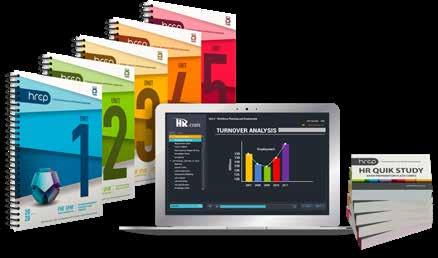
We offer group rates for teams of 5+ or more for our regularly scheduled PHR/SPHR/ SHRM or aPHR courses.
For groups of 12+, we can design a more customized experience that meets your organization’s needs. You can have scheduling flexibility in terms of the days, times, and overall length of the course.
Groups rates for HRCI exams are also available as an add-on.
All group purchases come with 1 year of HR Prime membership for each attendee to gain the tools and updates needed to stay informed and compliant.
Why Certification is the Best Choice:
CALL TODAY TO FIND OUT MORE 1.877.472.6648
ext. 3 | sales@hr.com | HR.com/prepcourse Group Rate Options 1 2 3
Are Employment NonCompete Agreements Enforceable?
By Gary Trachten, Kudman Trachten Aloe Posner LLP.
The short answer is… it depends. It is complicated. And the law of non-competes is far from uniform from state to state.
In some jurisdictions, i.e., California, Oklahoma, North Dakota, and Washington, D.C., most (if not all) forms of non-compete agreements are unlawful and unenforceable. About a dozen states have statutes that restrict or condition the use of non-compete agreements, and the trend in state legislatures is to pass more limitations on their use.
Even where non-competes are enforceable, courts consistently recite that they are “disfavored in the law” because they create impediments to peoples’ abilities to earn a living in their chosen field and make markets less free. Thus, courts police non-compete agreements and often find them to violate public policy and therefore unenforceable.
Last year, President Biden issued the Promoting Competition in the American Economy Order that asks the Federal Trade Commission to “curtail the unfair use of non-compete clauses and other clauses or agreements that may unfairly limit worker mobility.”
Nonetheless, companies have legitimate interests in protecting bona fide confidential information. For the most part, for information to be bona fide confidential
its secrecy must give a company a competitive advantage in the marketplace. However, companies often try to stretch that notion of confidential information by contractually defining it to extend to everything that is said or done within their four walls.
Companies also generally have legitimate interests in the customer goodwill that they engender through their employees. However, they often try to stretch that notion by contractually depriving former employees of their right to use the goodwill they had brought with them when first hired.
Four Types of Post-Employment Non-Competes
There are essentially four types of post-employment non-compete covenants. They are:
An employee promises not to perform services for any competitor for a specified duration — sometimes limited to a geographical territory. These range from extremely broad (may not work in any capacity for any unit of any competitor) to more specific (agrees not to work for a competitor in a capacity like the one they worked in for the former employer) restrictions.
A promise not to solicit clients and customers of the former employer to become clients or customers of the employee’s new employer (or anyone else).
HR Legal & Compliance Excellence presented by HR.com JANUARY 2023 20 Submit Your Articles
Top Pick
How to prepare a reasonable postemployment non-compete agreement
A promise, for a specified period, not to solicit employees of the former employer to terminate their employment, generally to join the employee’s new employer.
A promise to forever hold confidential information that is descriptively defined in the agreement – which if described too broadly can (as explained below) be a backdoor way of obtaining a perpetual non-compete. Courts sometimes scrutinize these to make sure they are not enforceable as backdoor unreasonable non-competes. On other occasions, courts enforce them, as they would any contract, in accordance with their stated terms.
Post-employment non-compete contracts must strike a balance between the legitimate interests of an employer to protect against unfair competition, and interests of employees in their mobility, and the public at large in robustly free and fair markets. The public interest extends to labor markets because the markets for goods and services are most efficient when there is competition for talent.
Employers, who usually have the greater bargaining power, naturally desire to limit competition as much
as they can. While employees prefer not to have their future job opportunities restricted, they often so much want the offered job that they often reluctantly sign on to non-competes, often mistakenly believing the common refrain that they are anyway unenforceable. Neither the customers nor the public is at the bargaining table to assert their interests.
What Is Reasonable?
Despite legislative trends, non-competes are for the most part enforceable if they are “reasonable,” with “reasonable” in this context being a term of art. An agreement is “reasonable” if (1) necessary (or in some states useful) to protect legitimate employer interests, (2) no broader in scope than is required to protect those legitimate interests, (3) not unduly burdensome for the employee, and (4) not meaningfully detrimental to the public interest. In New York, an employer bears the burden of demonstrating that the agreement meets all four prongs of this test.
However, in some other states, the former employee contesting the enforceability of a non-compete covenant bears the burden of proving that the covenant he or she signed is not reasonable.

HR Legal & Compliance Excellence presented by HR.com JANUARY 2023 21 Submit Your Articles
Are Employment Non-Compete Agreements Enforceable?
Since there is a public policy interest in robust competition, “legitimate” interests exclude an employer’s interest in reducing fair competition. For the most part, legitimate interests extend only to (a) protecting confidential information that the former employee had access to that can be used in an unfair manner against the former employer or (b) protecting against the former employee unfairly competing by exploiting the customer goodwill that the former employer had engendered through the employee. The trend in the law is that restraints on soliciting or hiring the former employer’s employees are not enforceable because these employer-legitimate interests are not served by such restraints.
But some courts nonetheless enforce “non-poach” restrictions on grounds that they do not interfere with the ability of the person who signed the agreement to obtain employment.
In determining whether the scope of the written restraint is greater than is enforceable, courts scrutinize its duration, nature, and geographic reach. An enforceable duration should be no longer than the useful shelf-life of confidential information to which the employee had access, or the period within which a replacement employee would have
sufficient opportunity to cultivate similar goodwill. While the court may find a covenant not to work for a competitor too broad to be enforceable, it may in the same case enforce a restraint on soliciting those customers who had been serviced by the former employee. The geographic scope may not extend beyond the employer’s current and soon-to-be markets.
Whether a restriction imposes an “undue burden” on the employee calls for a subjective judgment. Are the employee’s experience and skills readily transferable to another employer for similar compensation? A court might consider how well the employee had been compensated during the employment. In a few industries, the customary agreement provides for the employer to pay the employee non-compete pay during the period of restriction, and this will go far in establishing that the restriction does not impose an undue burden.
The public interest concerns whether the agreement unduly limits fair competition for talent between companies and/or is detrimental to the interests of clients, patients, or customers in being able to decide who they want to service them.

HR Legal & Compliance Excellence presented by HR.com JANUARY 2023 22 Submit Your Articles
Are Employment Non-Compete Agreements Enforceable?
Are Employment
Non-Compete Agreements Enforceable?
Confidentiality covenants are generally perpetual and when they reasonably define confidential information they will be enforced so long as the information remains confidential. But when they are overbroad in their description of what is confidential, such as when generic business strategies are defined to be a “secret sauce,” that can be detrimental to the former employee’s ability to work in the field. Courts often (but not always) recognize that where the purpose and/or effect of a confidentiality agreement is unjustifiably anti-competitive, it is a backdoor, perpetual, and unenforceable non-compete agreement.
Depending on the law in the particular state, a court that finds a non-compete to be unenforceable and overbroad in scope may nonetheless choose to re-write the scope and enforce it, or “bule pencil” the agreement by striking (rather than re-writing) the overbroad terms, or void the agreement in toto if a narrower version would have passed muster.
"You’re Fired; and Don’t Forget Your Non-Compete!”
As a rule, when a non-compete is part of a broader or simultaneous employment contract, the non-compete will not be enforceable when the employer materially breaches the employment agreement such as by firing the employee without cause during the agreed-to term. But what about when an employer fires without cause an “at-will” employee (who has no contract that protects from being thus fired) but had signed a non-compete agreement?
Can the employer enforce the agreement? That very much depends on the state law that applies. Although the non-compete will still be enforceable in most states, the current governing case law in New York is that an employer that fires an employee without cause loses its right to enforce the non-compete. But what in this context constitutes “cause” is far from clear. Nor is it clear whether the language of the agreement (“termination for any reason”) can trump the rule.
Self-Enforcing
Whether and the extent to which a non-compete is enforceable (where enforceable at all) in a court depends little on the language of the agreement but a great deal on the circumstances. But this is the most important thing to know: Regardless of what a court would decide, non-competes are most often selfenforcing. That is because most employers, even if they recognize that the applicant’s non-compete is not likely enforceable, will usually decline to hire someone who signed a non-compete because they want to avoid the risk and expense an of potential litigation.
And that risk is not limited to becoming embroiled in litigation against (and seeking to enjoin) the employee, but also litigation against the new employer. If the new employer procures an employee’s breach of a valid non-complete, the new employer could be liable to the former employer for interference with the non-compete agreement.
Gary Trachten, a Founding Partner of Kudman Trachten Aloe Posner LLP, has a practice concentrating on employment law and commercial litigation. Providing both transactional and dispute resolution services, he regularly represents inter-dealer brokers, traders, portfolio managers, investment bankers, corporate officers, physicians, salespersons, middle managers, and other employees. Would you like to comment?

HR Legal & Compliance Excellence presented by HR.com JANUARY 2023 23 Submit Your Articles
How 12 Organizations Are Changing Their Employee Leave Policy In 2023
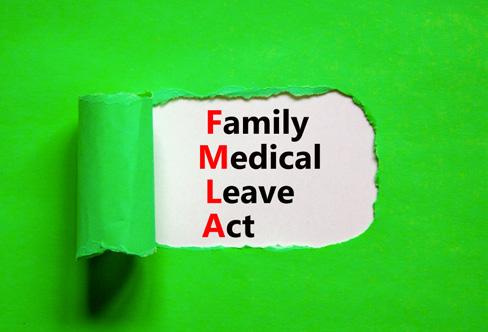
A leave policy that caters to your employees’ needs
By Brett Farmiloe, Terkel.io
From extending parental leave to unlimited paid sick days, here are 12 answers to the question, “How is your employee leave policy changing in 2023?”
● Extending Parental Leave
● Creating One Leave Type to Rule Them All
● Adding Pregnancy Loss Leave
● Including Caregiving Leave Days
● Adding Sabbatical Leave for Mental Health
● Offering Flex Leaves to Show Trust to Employees
● Presenting Unlimited Paid Sick Days
Antreas Koutis, Administrative Manager, Financer

Extending Parental Leave
Starting in 2023, our employee leave policy will be changing. Maternity and paternity leaves will not affect the regular available leaves.
We are making this change because we believe it is important to support families during the early stages of child-rearing. Allowing parents to take extended leaves without affecting their regular leave entitlement will encourage them to bond with their new baby and devote more time to their young family.
We believe this will lead to happier, more productive employees who feel supported by their employers. We hope other businesses will follow our lead and adopt similar policies to support families and promote employee wellbeing.
HR Legal & Compliance Excellence presented by HR.com JANUARY 2023 24 Submit Your Articles
● Building More Inclusive Qualification Requirements
● Carrying Over Unused Vacation Days
● Introducing Leave Pooling
● Changes in Tracking PTOs
● Choosing Their Own Days Off
John Ross, CEO, Test Prep Insight


Creating One Leave Type to Rule Them All
Recently, I had an employee approach me about adding “pet bereavement leave” to our long roster of leave types.
Her much-loved, 14-year-old cat had passed away, and she wanted a few days off to grieve. I was very sorry to hear about her cat, but honestly, enough is enough. That was when I decided our amount and type of leave available had gone too far. I thought we already had every type of leave imaginable (paternity, bereavement, sick, baby bonding, etc.), all with different accumulative calculations and ranges.
That is why I have switched our company over to a singular type of leave in 2023—personal days. Basically, rather than offering a dozen leave types, employees get 8 weeks of paid leave every year. They can use this time for whatever they want - pet bereavement, vacation, sick time, whatever. It is all accumulated and calculated the same way, reducing our HR administrative burden and helping to keep me sane.
David Aylor, CEO & Lawyer, David Aylor Law Offices
Adding Pregnancy Loss Leave
In 2023, we will offer pregnancy loss leave for employees, who have suffered a miscarriage. We have been considering the policy since learning that the dating-app company Bumble has offered their workers paid time off after a miscarriage.
Because of the pandemic, companies have expanded their benefits packages regarding caregiving and mental health. In fact, our company has recently revised our parental leave and fertility benefits policies.
By offering pregnancy loss leave, we aim to recognize the traumatic effects of miscarriage on our employees. Furthermore, we wish to support the affected individuals and families, who often struggle in silence because of the cultural stigma surrounding miscarriages.
Ruben Gamez, Founder & CEO, SignWell

Building More Inclusive Qualification Requirements
We are assessing current policies and building a universal employee leave policy in 2023 to recognize diverse needs and family setups. For example, we give all genders the same rights, and adoptive parents can take as much paid leave as birth parents. Many leave policies have historically prioritized employees that give birth, which is not fair to other parents.
Beyond parental leave, we are making eligibility criteria for other leave options more inclusive by reducing the minimum working time requirements to qualify and offering fair compensation for employees who earn commissions and bonuses rather than a straight salary.
Tracey Beveridge, HR Director, Personnel Checks

Carrying Over Unused Vacation Days
One change is that employees will now be able to carry over their unused vacation days from one year to the next. This is a significant change that will have a big impact on HR and employees.
The reason for the change is that it will allow employees to save up their vacation days so they can take longer trips or have more time off. This should be a positive change for employees, and HR should follow in your footsteps.
HR Legal & Compliance Excellence presented by HR.com JANUARY 2023 25 Submit Your Articles How 12 Organizations Are Changing Their Employee Leave Policy In 2023
Arkadiusz Terpilowski, Head of Growth & Co-Founder, Primetric

Introducing Leave Pooling
We are considering introducing “Leave Pooling” to our company.
If someone needs more days off for some reason, they can simply trade from someone who does not need them. It also creates a feeling of goodwill among employees, allowing them to feel connected.
Sometimes, the employees do not want to share their emergency with the management because of personal reasons to ask for extra leaves. With this policy, they can quietly get some days off on their sheet donated by their colleague.
Before we made this change, we had the traditional vacation schedule, we would take the usual U.S. holidays and employees would choose the weeks they wanted for annual vacations. We accept that employees in other countries may have no interest in U.S. holidays and would probably prefer to take days that apply to them.
With this in mind, employees will be welcome to select the days they want to take off, we will expect no one to use up any of their vacation balance on a day they would prefer to work.
By allowing the employees to celebrate their own national holidays we are contributing to our culture of acceptance and I would recommend that other businesses do the same if possible.
Ruth Novales, Marketing Director, Fortis Medical Billing Professionals
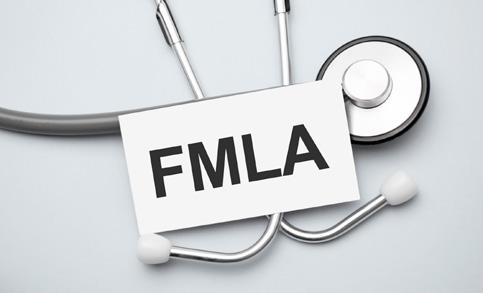
 Linda Shaffer, Chief People Operations Officer, Checkr
Linda Shaffer, Chief People Operations Officer, Checkr

Changes in Tracking PTOs
We plan to continue offering our employees unlimited PTOs, but we are looking to make some changes to the way it is used and tracked.
This change is being made to encourage employees to use their time off and to make it easier to track and manage. This change can help ensure that our employees are taking the time they need to recharge and rejuvenate. It can also help reduce stress and improve productivity.
Colin Palfrey, Chief Marketing Officer, Crediful

Choosing Their Own Days Off
Our business has reverted to a fully remote model and, because of this, we have been recruiting new employees from around the globe.
Including Caregiving Leave Days
One change we are considering is including caregiving leave days. With the recent pandemic, it was not uncommon for workers to take time off to care for sick family members.
Although remote working is viable, we are aware of the stressful effects of caring for a sick loved one without having to pile work on top of it. So doubling sick days to include caregiving responsibilities is one way we can support our employees through such a trying time.
HR Legal & Compliance Excellence presented by HR.com JANUARY 2023 26 Submit Your Articles
How 12 Organizations Are Changing Their Employee Leave Policy In 2023
Alaina Ross, Co-Founder & HR Director, Sleep Family

Adding Sabbatical Leave for Mental Health
Effective starting next year, we are amending our leave policies to include a sabbatical leave for mental health.
We are making this change because we feel our company has neglected and minimized the mental health of our employees over the past few years. As such, we feel it is time to show our employees that we value their mental health just as much as their work product.
For employees who qualify for this leave, they can take up to 60 days off in order to recharge, refocus, and get the help they need. We feel by offering this benefit, we will signal to our employees that we care about their future and want them around for the long haul.
Sam Tabak, Board Member, RMBH Charities
Offering Flex Leaves to Show Trust to Employees
In addition to accruing annual sick and vacation leave credits, we plan to give flex leaves in 2023. Our employees may use flex leave credits after exhausting all their sick and vacation leave allocations on the attendance portal.
We will not require our employees to submit a request in advance or present any reason for the absence once they return to work. Through this, we are telling our employees how we trust them with their time and expect them to use it responsibly. This will make them more productive and passionate to work, increasing the chance to boost their performance and job satisfaction.
Jarir Mallah, HR Specialist, Ling App
Presenting Unlimited Paid Sick Days

We have opted to remove one barrier to getting well quicker by adding unlimited sick days. We should force no one to come to work sick.
Instead, they should be able to heal. We believe that this will cause fewer sick days to be taken as we will grant employees the time to actually allow their immune systems to recover.
The hoped end result will be a decrease in the frequency of sick days taken.
Brett Farmiloe is the Founder and CEO – and currently CHRO - of Terkel.io. Brett is an SHRM Influencer and has also been a keynote speaker at several state SHRM conferences around the topic of employee engagement.


Would you like to comment?

HR Legal & Compliance Excellence presented by HR.com JANUARY 2023 27 Submit Your Articles
How 12 Organizations Are Changing Their Employee Leave Policy In 2023
Complying With The New SEC Pay Vs. Performance Disclosure Rules
By Tanya Jansen, Beqom
Pay
for performance is not just a good idea, it is the law. At least, disclosing how well you do it is. On August 25th, 2022, the US Securities and Exchange Commission (SEC) amended its rules to require companies to disclose information reflecting the relationship between executive compensation and the company’s financial performance.
According to law firm White & Case, the new rules “represent the most fundamental change to the executive compensation rules since 2006.”
Companies must begin to comply with the new disclosure requirements in filings for fiscal years ending on or after December 16th, 2022.
What will it take to cope with the new rules in the most efficient way?
Old Idea, New Requirements
Reporting on executive compensation is nothing new. Existing regulations (Item 402 of SEC Regulation S-K) require companies to disclose the compensation of their named executive officers (NEOs) and directors. In 2006 the SEC updated its disclosure rules, requiring companies to include a compensation discussion and analysis (CD&A) section in their filings, along with data tables and discussions regarding the compensation of executives, directors, and employees.
The new rules on pay versus performance disclosure have been a long time coming. They represent the implementation of a requirement first mandated by the Dodd-Frank Wall Street Reform and Consumer Protection Act of 2010 (Dodd-Frank Act), and were first proposed in 2015, with a final
review period that commenced in January 2022.
Transparency and Traceability
Like many SEC rules, the goal is to provide stakeholders with transparency and its companion, traceability. Transparency is a key element of any compliance reporting, to aid both investors and auditors. Investors want to understand whether a company is well-managed. Auditors need to be able to see exactly where the numbers come from and how they are calculated.
Compensation teams are already familiar with SEC disclosure mandates, such as the requirement to report the median annual total compensation of all employees other than the chief executive officer (CEO), the CEO’s total annual compensation, and the ratio between the two (pay ratio disclosure).
HR Legal & Compliance Excellence presented by HR.com JANUARY 2023 28 Submit Your Articles
Top Pick
What will it take to cope with the new rules in the most efficient way?
Those disclosures provide visibility that can help evaluate pay fairness or flag exorbitant CEO compensation. The new rules attempt to shine a light on pay effectiveness. While most companies already look at pay for performance in some fashion, the new rules require using a prescribed approach to that measurement which involves gathering and manipulating lots of data and presenting the information in a standardized tabular format.
The new disclosures will give investors an objective measure of the relationship between executive pay and company results,
providing a metric that can be used to compare companies and to help evaluate the effectiveness of executive pay packages.
More Requirements Mean More Data, Time, and Cost
What’s the upshot for compensation teams who are tasked with compliance? It means collecting and analyzing mounds of compensation and performance data, performing calculations, and being able to present the information in a clear and traceable way.

To fulfill the requirements means being able to report five years
of executive compensation actually paid along with company performance details (only three years of data during the initial transition period). “Compensation actually paid” is calculated through a complex formula that looks at not just total compensation as reported on the Summary Compensation Table, but also must include a host of adjustments for pension benefits, equity awards, options, and other earnings.
You also need to calculate the average compensation paid to all NEOs, regardless of whether their pay is linked to performance.
HR Legal & Compliance Excellence presented by HR.com JANUARY 2023 29 Submit Your Articles
The New
Vs. Performance Disclosure Rules
Complying With
SEC Pay
Compliance can be costly and time-consuming, as it requires assembling, tagging, and manipulating a lot of data and then producing reports that not only must be accurate and precisely formatted but traceable back to the source data.

Failure to comply adds another dimension of risk, as it can have legal consequences and impact shareholder confidence in company transparency and reporting.
How to Take the Pain and Cost Out of Compliance
To ensure accuracy, efficiency, transparency, and overall reduced risk requires a centralized,
rules-based compensation management platform.
A compensation platform provides a central location to store all the related data, yielding one consistent version of the truth that is transparent and traceable, and readily available for reporting and analysis. A system should further be able to import and store whatever compensation or performance data is not already housed in the system but may be needed for calculations or reporting.
A compensation system will not only provide the needed transparency and reporting, but also a full audit trail of

compensation decisions and approvals.
This article first appeared here.
HR Legal & Compliance Excellence presented by HR.com JANUARY 2023 30 Submit Your Articles
Tanya Jansen is the Co-Founder of Total Compensation and Continuous Performance Management Solution, at Beqom
Would you like to comment?
The
Performance Disclosure Rules
Complying With
New SEC Pay Vs.
Earned Wage Access: Aiding Unbanked And Underbanked Employees
Most
Americans have little money left over at the end of the month
By Robert Moore, Time Equipment Company
Easier access to wages is a hot button for many employees. One reason for this need is the number of unbanked and underbanked individuals in the U.S. The FDIC reports that approximately 7.1 million U.S. households are unbanked, meaning no one in the household has a checking or savings account at a bank or credit union. This issue became vital as federal stimulus checks attempted to get into these individuals’ hands.
In addition, ‘underbanked households’ have just as big a challenge, with nearly 20% of U.S. households falling in this category. Underbanked households have at least one person with an account at a federally insured institution. However, they also regularly use alternative financial services and products, like payday lenders or check cashing services.
Unbanked/underbanked rates are higher among Black, Hispanic, American Indian, Alaska Native, and working-age disabled households at nearly three times the national average.
The number one reason cited for people being unbanked/underbanked is that they do not have enough money to meet minimum balance requirements (48.9%). Traditional banks then charge these accounts for not maintaining a minimum
balance. As a result, most of these individuals carry minimal average daily balances in their accounts while living paycheck to paycheck.
A June 2021 research study states that over 125 million U.S. adults live paycheck to paycheck. In addition, 70% of Millennials (currently ages 25 to 42) currently, live paycheck to paycheck. This segment is the largest share of any generation. Thirty-three percent of Millennials struggle to pay their bills on time.

HR Legal & Compliance Excellence presented by HR.com JANUARY 2023 31 Submit Your Articles
Most Americans, even those with higher wages, have little money left over at the end of the month. In addition, the pandemic compounded some of the complexities of balancing finances.These circumstances suggest that the need for more immediate access to wages will grow as new challenges and opportunities emerge in the months and years ahead. Moreover, such tools may be vital in helping consumers cover the expenses that can arise as part of daily life.
with this service. The advantage is that there is no additional workload on payroll, and employees get immediate access to a portion of their earned wages. Some EWA providers charge a nominal fee to the employee, employer, or both to access these funds compared to payday lenders.
However, EWA providers use the merchant service fee associated with the debit card provided to cover this expense. Most people are familiar with getting “1.5% cash back” on purchases with a debit card. Rather than the consumer getting the funds, they are used to offset the cost of EWA fees. In reality, the merchant pays the EWA fee, so there is no cost to the employee or employer.
The need for low or no-fee access to earned wages is significant to the unbanked/underbanked employee. They no longer need to use costly payday lenders or check-cashing services. Ultimately, this improves employees’ financial well-being, increases retention, lowers costs, and helps with diversity and inclusion initiatives.
Payroll departments are looking for ways to help with these issues while keeping costs at a minimum. In a recent poll of payroll professionals, 25% stated that on-demand pay is necessary for improving the employee experience. In addition, they believe earned wage access is a differentiating benefit for employers in the future.

Modern earned wage access (EWA) services offer easy access to a federally insured bank account with a debit card at no cost to the employee or employer. Workers submit their requests via mobile app at the end of their shift when funds are needed, and available wages are transferred onto this debit card. Depending on the EWA provider, these funds are immediately available to the employee. This action can be done because these EWA services are integrated with the company’s time and attendance system. Because workers set up their direct deposit to this new account, when payroll is deposited, the system automatically collects any wage advances.
Many companies protect their employees by only offering a portion of their total wages to be available
Robert Moore is the Director of Training for Time Equipment Company’s workforce management solutions. He provides a unique educational perspective with a Bachelor in Drama, MBA, and SHRM-CP Certification. In addition, his decades of experience and exposure to various business types offer a holistic understanding of the complex workforce. Robert’s presentations on “Becoming an Employer of Choice” and “Understanding the New Generations” make him a sought-after speaker around the country. Would you like
HR Legal & Compliance Excellence presented by HR.com JANUARY 2023 32 Submit Your Articles
Earned Wage Access: Aiding Unbanked And Underbanked Employees
to comment?
The need for low or no-fee access to earned wages is significant to the unbanked/underbanked employee
401(k) Audits: What You Need To Know
What they are, who must conduct them (and when), what they involve, and how to prepare for one
By Grace Ferguson, Zanefits
There are many benefits to offering a 401(k) plan
For starters, 401(k) plans are critical to attracting and retaining qualified people. They also help employees prepare for retirement.
But did you know that, as a plan sponsor, you might be required to conduct a 401(k) audit?
Here’s what you need to know:
● There are many benefits to offering a 401(k) plan, but as a plan sponsor, you might be required to conduct a 401(k) audit
● A 401(k) audit is an annual review of an employer’s 401(k) plan by an Independent Qualified Public Accountant
● The audit verifies whether the plan is complying with requirements administered by the Internal Revenue Service and the Department of Labor
● Whether the plan must undergo an audit comes down to the audit requirements of the Employee Retirement Income Security Act
● It’s important to do your own internal 401(k) audits, prior to the external audit, so that you can uncover any issues that could result in noncompliance
Read on to learn about 401(k) audits, including what they are, who must conduct them (and when), what they involve, and how to prepare for one.
What is a 401(k) audit and what are the requirements?
A 401(k) audit is an annual review of an employer’s 401(k) plan by an Independent Qualified Public Accountant (IQPA). The audit verifies whether the plan is complying with requirements administered by the Internal Revenue Service (IRS) and the Department of Labor (DOL).
These requirements relate to:
● Establishing the 401(k) plan — e.g., plan document, trust to hold the plan’s assets, and record keeping system.
● Operating the 401(k) plan — e.g., participant eligibility, contribution and compensation limits, withholding pretax and after-tax contributions, remitting employee contributions, required minimum distributions, Form 5500 filing, and nondiscrimination testing.
However, a 401(k) plan isn’t necessarily subject to an independent audit just because it must adhere to IRS and DOL rules. Whether the plan must undergo an audit comes down to the audit requirements of the Employee Retirement Income Security Act (ERISA).
HR Legal & Compliance Excellence presented by HR.com JANUARY 2023 33 Submit Your Articles
Top Pick
WHETHER THE PLAN MUST UNDERGO AN AUDIT COMES DOWN TO THE AUDIT REQUIREMENTS OF THE EMPLOYEE RETIREMENT INCOME SECURITY ACT (ERISA).
Note that ERISA is a federal law that sets minimum standards for most private-sector health and retirement plans. ERISA is enforced by the IRS, the DOL, and the Pension Benefit Guaranty Corporation.
Generally, if a 401(k) plan is covered by ERISA and has 100 or more eligible participants at the start of the plan year, then it is considered a “large” plan and must be audited by an IQPA.
This means 401(k) plans with fewer than 100 participants at the beginning of the plan year generally do not need to undergo external 401(k) audits.

Although the general threshold is 100 or more eligible participants, there are some exceptions.
What Are the Exceptions to the 100-Participant Threshold?
There are two primary exceptions to the 100participant rule. One pertains to a “short plan year,” and the other to the “80-120 rule.”
Short (or partial) plan year
If your plan year lasts 7 months or less, you can postpone the audit to the next plan year. This doesn’t prevent the audit — it only delays it.
Additionally, if the number of eligible participants falls below 100 in the next plan year, then you must undergo an audit as a “small” plan for the short/partial plan year.
Note that 401(k) plan sponsors must use Form 5500 to fulfill their reporting requirements under ERISA and the Internal Revenue Code. Plan sponsors file Form 5500 annually through the ERISA Filing Acceptance System II (EFAST2).
HR Legal & Compliance Excellence presented by HR.com JANUARY 2023 34 Submit Your Articles
Is your 401(k) plan subject to ERISA audit requirements?
401(k) Audits: What You Need To Know
During a 401(k) audit, the IQPA audits the plan’s financial statements and then prepares a report, which the plan sponsor must attach when filing their Form 5500.
So, if you postpone the audit to the next plan year, you will need to perform 2 independent audits: 1 for the short plan year and 1 for the (current) full plan year.
You must also attach the 2 audit reports to the same Form 5500 you are filing for the (current) full plan year.
The 80-120 rule
This means your 401(k) plan does not need to undergo an independent audit if it has between 80 and 120 eligible participants and had a “small” plan status in the previous tax year.
For example, if the plan had 90 eligible participants in Plan Year 1 and 100 in Plan Year 2, you do not need to conduct an audit for either year.
So long as the number of eligible participants stays at 120 or less, you are not required to have an audit. But if the number rises to more than 120, then you must audit the plan through an IQPA.
When Must Plan Sponsors Audit Their 401(k) Plan?
Plan sponsors must complete the audit 7 months after the end of the month in which the plan year ends.
For instance, if the plan year ends on December 31, you must have the plan audited (and submit the audit report with your Form 5500) by July 31 of the following year.
Form 5500 filers can apply for a one-time extension of up to 2 ½ months. If this extension is granted, then the audit report’s due date would be extended as well.
What’s Involved in a 401(k) audit?
A 401(k) audit focuses on 2 main areas: compliance and financial reporting.
Compliance verifies whether the plan is operating in accordance with IRS and DOL regulations and the plan document.
Financial reporting determines the accuracy of the plan’s financial statements as well as the information reported on Form 5500.

Documents the IQPA will likely need to review include the following:
● Prior years’ and current year’s Form 5500 filings
● Plan document, including amendments
● IRS determination letter for the plan document
● Summary plan description, including any modifications
● Agreements with 401(k) providers
● Record keeping reports
● Trust reports
● Plan activity, such as distributions, loans, etc.
● Contributions placed into the trust
● SOC report revealing the internal processes of 3rd-party providers (e.g., record keepers or trustees)
● Employee census data
● Proof of fidelity bond protecting the plan against losses caused by fraudulent or dishonest actions
● Prior years’ audit reports, if applicable
● Other important correspondence or agreements relevant to the plan
HR Legal & Compliance Excellence presented by HR.com JANUARY 2023 35 Submit Your Articles
Audits: What You Need To Know
401(k)
Tips for Employers to Prepare for a 401(k) Audit
Below are steps you can take to help ensure a smooth 401(k) audit process.
● Choose an experienced and reputable IQPA. Not all CPAs specialize in 401(k) audits, so make sure you select one that specializes in this area.
● Gather and organize the necessary documents. Work with your 3rd-party administrator (if applicable) to assemble the necessary documents, as requested by the IQPA. See the previous section for some of the documents you’ll likely need to provide.
● Use integrated HR/payroll software to increase speed and accuracy. An integrated HR tool makes it easier to obtain your 401(k) records for the audit, plus helps ensure the information is correct.
It’s also important to know the common types of 401(k) plan errors, so you can avoid them.
Common 401(k) plan errors include:
● Failure to compare the plan document’s eligibility requirements with actual eligibility practices
● Also, failure to compare the plan document’s definition of “compensation” with actual payroll practices

● Failure to deposit participants’ contributions on time
Keep in mind, the independent audit is a legal requirement, which means plan sponsors can be penalized for missing the audit.
Don’t Wait for the Audit to Identify 401(k) Issues
It is important to do your own internal 401(k) audits, prior to the external audit, so that you can uncover any issues that could result in noncompliance.

If you skip this step, you risk the IQPA finding problems that could jeopardize the plan’s tax-qualified status. The IQPA may also uncover additional compliance issues that could lead to other penalties.
You will likely have an opportunity to correct issues found during the audit. An experienced IQPA can help you develop an action plan for fixing these problems, plus offer guidance on how to prevent them in the future.
You may be able to rectify the issues through voluntary correction programs offered by the IRS and DOL.
With that being said, it’s best to minimize audit risks by ensuring your 401(k) internal processes are in top shape, and planning ahead.
This article first appeared here
Grace Ferguson is a business writer and blogger covering payroll, employee benefits, and human resources at Zanefits. She has vast experience serving as a payroll and benefits administrator for large and small businesses. At age 18, Grace landed her first job: working as a secretary for a forestry company.
Would you like to comment?
HR Legal & Compliance Excellence presented by HR.com JANUARY 2023 36 Submit Your Articles
401(k) Audits: What You Need To Know
VIRTUAL EVENTS
WEBCASTS
VIRTUAL
January 31, 2023
January 24, 2023
11:00 AM - 12:00 PM ET
January 25, 2023 06:30 AM - 07:15 AM ET
January 31, 2023 12:00 PM - 1:00 PM ET
February 9, 2023 12:00 PM - 12:30 PM
EVENTS & HR.COM WEBCASTS UPCOMING
www.hr.com/upcoming_webcasts www.hr.com/virtualconferences
View our Upcoming Webcasts Schedule and Register Today!
View our Upcoming Virtual Conference Schedule and Register Today!
Rising Minimum Wage Rates and How They May Impact Your Business
REGISTER
Leadership Succession Made Simple: Do it right and do it (much) faster.
REGISTER
Building an Onboarding and Learning and Development Program for a Growing Company
REGISTER
Pick the Low Hanging Fruit. A Tip To Be Successful on the HRCI & SHRM Exams.
REGISTER
ET
Performance
New Ideas and Tools for Effective
Management
REGISTER
REGISTER
REGISTER
People Strategy for the #FutureOfWork January 19, 2023
The State of Human Experience in the Workplace February 15-16, 2023
What Can Be Done to Reprice Underwater Stock Options?
Companies can consider multiple ways to reinvigorate these unique incentive options
By Stephen Rickles, Spencer Fane LLP
When the value of a company’s equity has declined since the issuance of stock options, causing the options to be considered underwater and the options no longer provide the intended incentive, companies often consider repricing the options.
This may be accomplished by amending the option agreements to reset the exercise price (but not below current fair market value), or by canceling the existing options and issuing new options. The repricing may be applied to all outstanding underwater options or may be limited to specific individuals or groups of employees.

HR Legal & Compliance Excellence presented by HR.com JANUARY 2023 38 Submit Your Articles
Unless required by the term of the company’s stock option plan, reducing the strike price of the options would not require the consent of the optionee, nor would it be necessary for a privately held company to obtain shareholder approval of the repricing. Different shareholder approval rules apply to public companies.
Additional terms and conditions might be included in the amended or replacement options with the agreement of the affected employees. For example, a company may use the repricing of a stock option as an opportunity to add or modify the vesting schedule reflected in the original option.
Changes requiring the consent of the optionee may raise securities law considerations that are beyond the scope of this article. The new or amended options may retain the expiration date of the original option, or set a new expiration date (e.g., 10 years from the date of the repricing; five years in the case of greater than 10% shareholders).

While the repricing of a nonqualified option may be treated as an amendment of the original option, the rules are different for Incentive Stock Options (ISOs). The modification of an ISO that benefits the optionee is treated as the grant of a new option. A repricing is considered to be such a modification. The date of grant of the option affects a number of provisions applicable to ISO’s.
For example, one prerequisite for the beneficial tax
treatment applicable to ISO’s is that the option shares be held for at least two years from the date of grant. If an ISO is repriced, this two-year holding period starts anew.
An optionee may wish to decline an offered change, for various reasons. No modification is deemed to have occurred solely because a company offers to change the terms of the option if the optionee does not accept the change, unless the offer remains outstanding for 30 days or more. An inadvertent modification may be reversed before exercise of the option or, if earlier, before the last day of the calendar year.
The repricing of an ISO also may have other unintended consequences. For instance, in order to qualify for ISO tax treatment, the maximum fair market value (determined as of the date of grant) of options that first become exercisable in any calendar year is limited to $100,000. Repricing an ISO may cause this limit to be exceeded. In recalculating this limit, both the old and new options are counted in the year of repricing.
Although repricing options can trigger many complicated technical considerations, repricing may be an effective means of reinvigorating the incentive provided by options that are now underwater.

Steve Rickles is a Partner at Spencer Fane LLP in the law firm’s Denver office. His practice focuses on employee benefits, estate planning, and business and tax-exempt organizations areas.
Would you like to comment?
HR Legal & Compliance Excellence presented by HR.com JANUARY 2023 39 Submit Your Articles
Can Be Done to
Stock Options?
What
Reprice Underwater

ePublication EditorialCalendar Checkoutthenewandupcoming themedHRtopicsinHRLegal& ComplianceExcellence Check ePublications Editorial Calendar Here. Would you like to submit an article? | Write to us at ePubsEditors@hr.com Submission Guidelines 1 Contingent Work Jan 2023 2 Cybersecurity Feb 2023 3 Worker Immigration Mar 2023 4 Substance Abuse and Marijuana in the Workforce Apr 2023 5 Workplace Equity - Interview Special May 2023 6 Workplace Unions and HR Jun 2023
Thank you for partnering with us!
Circa provides OFCCP compliance management and recruiting technology solutions to deliver qualified candidates on a level, equitable playing field for organizations.
Aimed Alliance is a non-profit organization that seeks to protect and enhance the rights of health care consumers and providers.
Paycom (NYSE:PAYC) offers cloud-based human capital management software to help businesses streamline employment processes, from recruitment to retirement. With a robust suite of products including payroll, time and labor management.

THANK YOU
Global employment partner Omnipresent provides techenabled business solutions combined with personalized expertise to support hiring people globally.
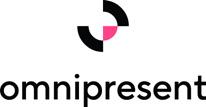
 LEARN MORE
LEARN MORE
ADVERTISE WITH US
LEARN MORE
LEARN MORE
LEARN MORE



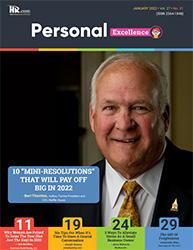



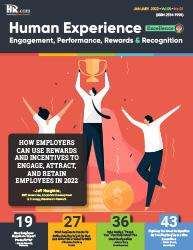

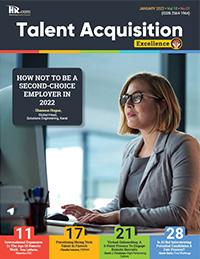



Publications
Targeted Publications
Reach Your Audience Informing, Educating, Enlightening and Assisting HR professionals in their personal and professional development, the Excellence series offers high-quality content through the publications! Like to submit an article? Use our online submission form or for more information go to www.hr.com/ExcellencePublications
13
to













 Partner, The RBL Group
Partner, The RBL Group












 Dr. Beverly Kaye CEO, BevKaye&Co.
Dr. Beverly Kaye CEO, BevKaye&Co.






 By Gary T. Clarke and Cheryl Rea, Stikeman Elliot
By Gary T. Clarke and Cheryl Rea, Stikeman Elliot

















 Linda Shaffer, Chief People Operations Officer, Checkr
Linda Shaffer, Chief People Operations Officer, Checkr






















 LEARN MORE
LEARN MORE












